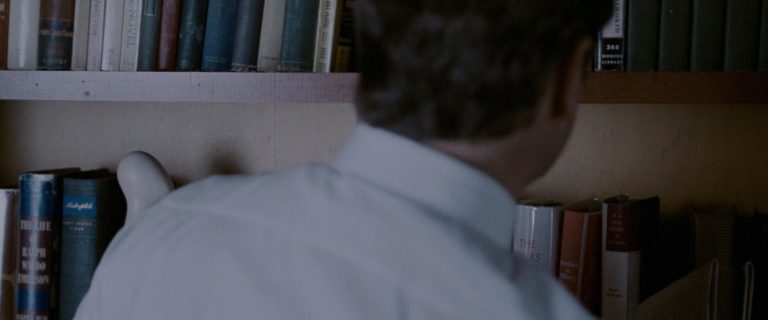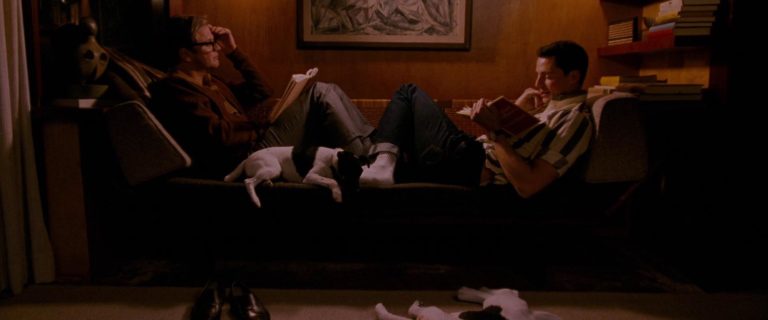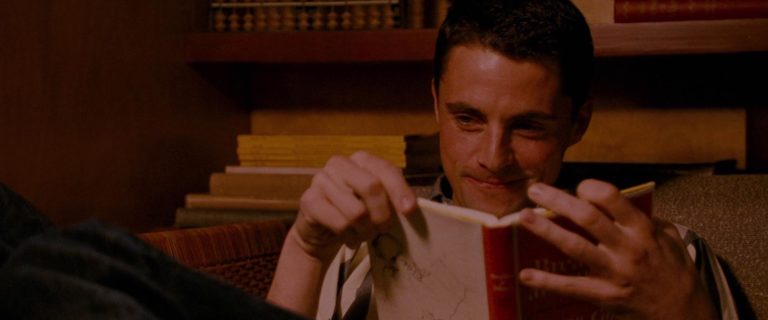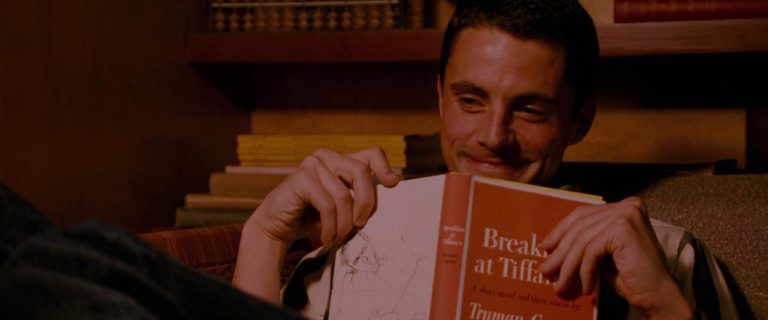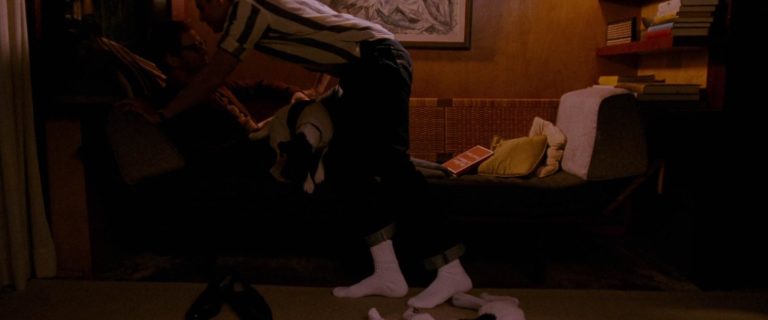Random House, American publisher, founded in 1927 by Bennett Cerf and Donald Klopfer.
Two years after buying Modern Library in 1925, Bennett Cerf and Donald Klopfer established Random House. They had intended to just put out “a few books on the side at random,” but instead built a publishing giant, presenting many great names, such as James Joyce, James Faulkner, Isak Dinesen, André Malraux, Robert Graves, John O’Hara, Sinclair Lewis, Robert Penn Warren, and successful titles, like Ulysses, Ellison’s Invisible Man, The Cat in the Hat and, The Iceman Cometh, as well as many classic reprints.
By our count, David designed 31 jackets or covers for Random House (including three for Modern Library and two for Modern Library paperbacks) between 1955 and 1961. Among them is one cultural touchstone for the era, Truman Capote’s 1958 novel, Breakfast at Tiffany’s, as seen in Tom Ford’s film, A Single Man, made 2009, but set in a meticulously recreated early 1960s Los Angeles.
At Random House, David received his assignments from Charles Anthony “Tony” Wimpfheimer, Regina Spirito and “Ruth K.” Some commissions came with technical limitations, due to size or budget, or with very specific directives as to color and writing style, due to the desires of the editors. For instance, Breakfast at Tiffany’s came with a sketch by Bennett Cerf, a color swatch and a request for “strong Bodoni” lettering.1Notes from Regina Spirito and Ruth K. in Ismar David papers, box 5, folder 119, Cary Graphic Arts Collection, RIT. Turn-around time for a sketch was usually 10–14 days, although rush jobs came in, too. Often sketches were returned with exact instructions for adjustment, but at times, the back and forth must have tried the patience of all concerned. “Are you still with me or have you tossed all this across the room?”2Regina Spirito about Go and Catch a Falling Star on April 23, probably 1957. Ismar David papers, box 5, folder 119, Cary Graphic Arts Collection, RIT.
Ismar David’s Random House book jackets and covers are: Heritage, 1955; A Family Party, 1956; Great Ages and Ideas of the Jewish People, 1956; Of Human Bondage (Modern Library paperback), 1956; The Magic Flute, 1956; The Stoic and Epicurean Philosophers, 1956; And Walk in Love, 1956; The Greek Commonwealth (Modern Library), 1956; Sartoris, 1956; The Valley of God, 1956; Death of a Man, 1957; The Ox-Bow Incident (Modern Library paperbacks), 1957; The Eye of the Beholder, 1957; Go and Catch a Falling Star, 1957; Madame Bovary, 1957; The Catcher in the Rye (Modern Library), 1958; Breakfast at Tiffany’s, 1958; A Knot of Roots, 1958; They Came to Cordura, 1958; The World’s Great Operas (Modern Library), 1959; Love and Money, 1959; The Quick Rich Fox, 1959; Before You Go, 1960; The Faces of Blood Kindred, 1960; On Wings of Faith, 1960; Putting First Things First, 1960; The Seducer, 1960; The Trend is Up, 1960; The Witching Ship, 1960; The Important Thing, 1961; The Wisdom of Buddhism, 1961 and The Mountain Lion, 1962. In 1957, he designed stationery for the firm, which Bennett Cerf “liked very, very much.”3Letter from Tony Wimpfheimer, April 22, 1957. Ismar David papers, box 5, folder 119, Cary Graphic Arts Collection, RIT.


























